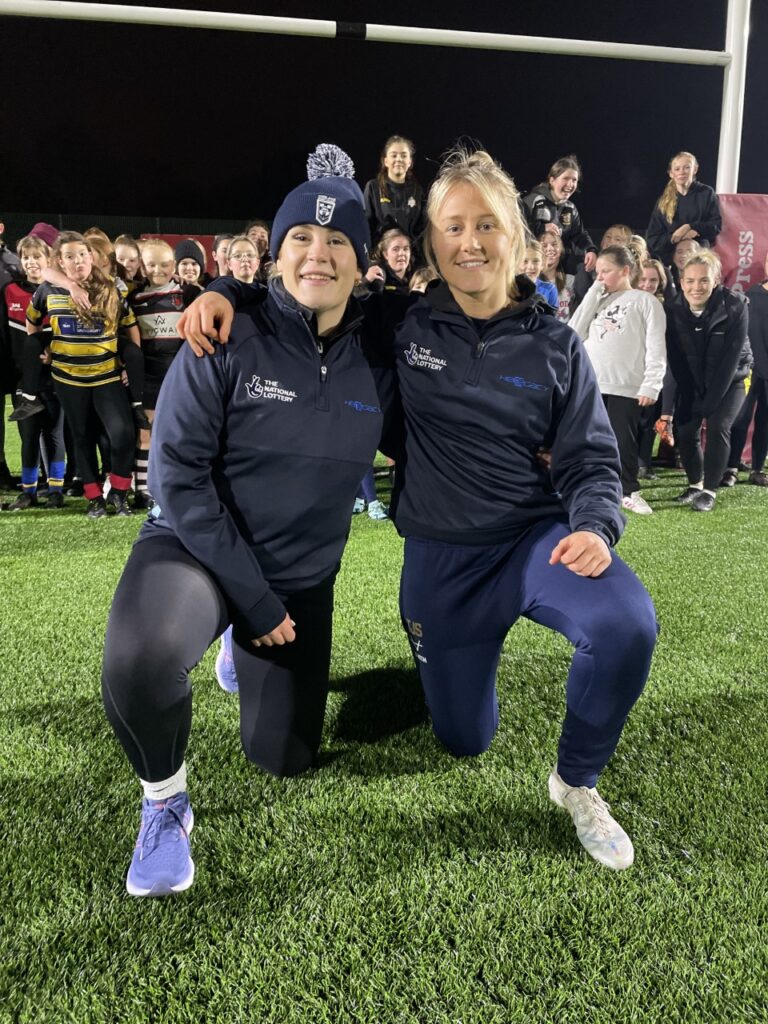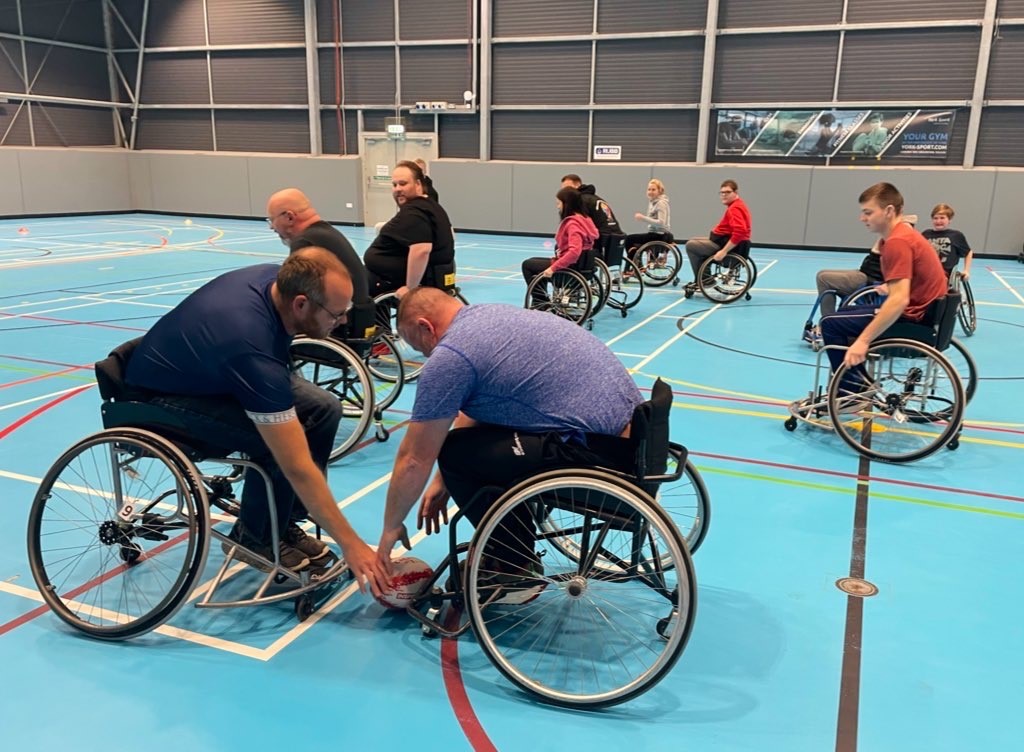When England was announced as host for the Rugby League World Cup 2021, organisers promised it would be the biggest, best and most inclusive event in rugby league history. It was the first time that the men’s, women’s and wheelchair tournaments ran simultaneously. With all 61 matches live streamed, the tournament brought in new audiences from around the world to the sport and to the women’s and wheelchair game.
Delayed by a year due to the COVID-19 pandemic, the world cup was played out in 21 venues with the majority in cities across the north of England, considered the heartland of rugby league. Though only a few months have passed since the three finals were played, the sport is experiencing a growing interest in its inclusive offerings.
So how are rugby league and Rotary in Yorkshire and Lincolnshire linked? A closer look at the two reveals similar values, a commitment to community and a push toward more diversity, equality and inclusion.
A history of continuous change
Much like Rotary, rugby league is a sport heavily integrated with its community. For over 120 years, it has relied on local people to not only play the sport, but also to watch matches and support the clubs and players. In return, the sport adjusted to the needs of the community, developing the game as its community and society changed.
“Rugby league has always been a sport that has been innovative. It always has been from its inception,” said John Huxley, 76, a retired rugby league journalist and media manager. John began covering rugby league in 1967 and held various journalistic and consultancy roles in the sport for over three decades.
He explained that rugby league has been constantly changing and adapting to the needs of the communities and its players–such as giving players (from mainly working class backgrounds) wages to cover missed work shifts and playing matches on Saturday afternoons when people had time off. Over time, the sport continued to develop and introduced new concepts, like the sin bin which was taken from ice hockey, and created a world cup tournament, an idea championed by the French, to make rugby league the sport that it is today.
Widening opportunities for women and girls
Women have always been involved in rugby league as volunteers and supporters. However, it wasn’t until the 1920s that women had more formal opportunities to play the sport with participation widening more over recent decades.
For 21-year-old Daisy Sanderson, opening the sport to women and girls has had a clear benefit. Daisy began playing rugby league at school in York and recounts travelling to Leeds and other parts of Yorkshire for matches because there were no other girls teams in the area. At 16, she signed with York Valkyrie, part of York RLFC which competes in the Women’s Super League, as there were no other options to play rugby league at her age. In the six years she has been involved in the club, she’s seen the game grow.
“The game is continuously growing. It’s amazing to see from how little it started out to how big it’s gotten in only a few years,” said Daisy. She talks about the increasing number of women’s teams forming across the entire country and the development pathways available to girls in clubs and schools so they can get much needed experience and training in the sport. Though opportunity to participate is growing, retention can still be an issue with lack of payment for their participation at elite levels being cited as one main issue. In an effort to continue to support the women’s game and growth, York RLFC recently announced that York Valkyrie will join Leeds Rhinos in paying female players starting the upcoming 2023 season.
“It’ll be unreal for the girls that are coming into the game now. They are going to have such good opportunities. We are getting to play on Sky Sports now, we are getting big sponsorship,” said Daisy. “There’s a lot of money being put into the women’s game now. We’ve had over a hundred years where we haven’t been able to play at this level and finally we are allowed to.”
Women and girls aren’t the only beneficiaries of widening opportunities and participation. “Most of the clubs now have female teams now because they see the connection,” said John. “The fact that rugby league has introduced female referees and touch judges in men’s matches is a massive step forward for the sport. It offers respectability to our sport and offers a wider range and connection to sport for more and more people.”

Rugby for everyone
Beyond the women’s game, rugby league is making space for more people of different abilities to participate. The creation of the Physical Disability Rugby League (PDRL), Learning Disability Rugby League (LDRL) and Wheelchair Rugby League is changing the identity of the sport to one that is accessible and inclusive.
For John, “the arrival of wheelchair rugby is a new opportunity and a new dynamic that [the rest of the rugby league community] hasn’t fully understood until this world cup.” Having the Wheelchair Rugby League World Cup alongside the men’s and women’s tournaments brought much needed exposure to the sport. It was also the first time that wheelchair rugby league players received the same participation fees as players in the men’s and women’s competition and were awarded prize money. In a sold-out final, host nation England beat France 28-24.
Creating more diverse opportunities for players is a value that many clubs have promoted in recent years. “On the back of the England Rugby team winning the world cup, we have launched our own wheelchair team in recent weeks,” said Adam Prentis, Foundation Delivery Manager at York RLFC Foundation.
In 2019, the club became one of the founding members of the Learning Disability Super League and hopes to start a physical disability team in 2023. Adam explained that demand for wheelchair rugby came from both the existing community of wheelchair users and new people wanting to get into the sport. There are now over 20 people coming to the wheelchair rugby sessions, and the club anticipates this number to grow.

In Hull, one of rugby league’s strongholds, there is a strong link between the two Super League clubs (Hull Kingston Rovers and Hull FC) and the community. In mid January, Hull KR Foundation announced the launch of a new wheelchair rugby league team, adding to their existing offerings of female rugby league pathway, Learning Disability Rugby League, Physical Disability Rugby League and netball. Hull FC also has a similar rugby offering with various options open to children and adults.
Outside of rugby, the clubs are also responding to various community needs and issues in their own way. Through partnerships, they are helping people develop skills to combat the cost of living, helping reduce loneliness and isolation, providing fitness opportunities and even helping young people overcome gambling harm. By working alongside charities, community groups and schools rugby league clubs across the country are supporting the development of health, education, community and rugby league in their cities and regions.
Lessons from rugby league
Rotary and rugby league have come a long way since they began over 100 years ago–from introducing women to their organisations, finding more inclusive ways for participation, building membership and creating stronger links with their communities.
“There are lots of parallels, not just between Rotary and rugby league. For lots of organisations it's change or die,” said John, who is also a member of Haworth and Worth Valley Rotary. Having witnessed change and stagnation in rugby and Rotary over the years, he believes that widening the offer is essential. “You have to react to what’s happening in society.”
Rotarians and rugby leaguers alike take pride in community and work hard to bring new people into their organisations. But the work isn’t done, and it perhaps never will be.
With so many shared interests and values around community, inclusion, equity and diversity, perhaps there is more space for the two to work closer together. There are over 100 clubs within the Rotary family of Rotary (over 18's), Rotaract (over 18's), Interact (secondary school) and Rotakids (primary school) within our Rotary International District 1040, covering large areas of Yorkshire and Lincolnshire. With so much opportunity for collaboration on the doorstep, it makes sense that Rotary and rugby league work together, help each other evolve and do more good in the communities that they serve.
Rebecca A Mendoza is a freelance writer and member of York Rotary. You can learn more about her work at www.rebeccaamendoza.com